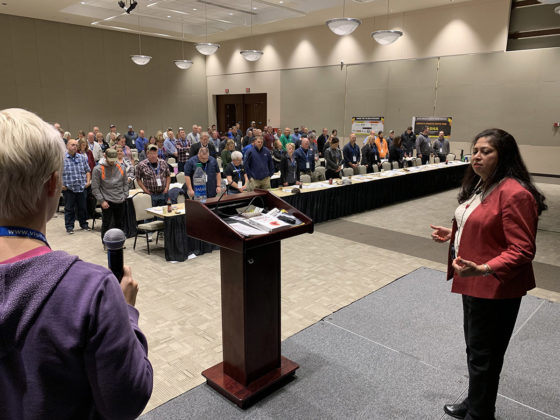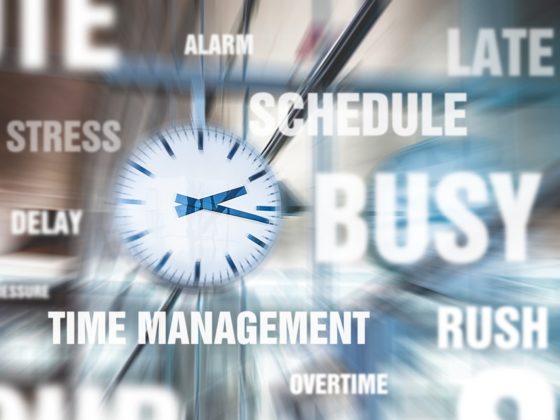“My work stress is driving me nuts,”; My friend Connie said one day.
Do you ever feel that way?
According to one survey, 80% of employees reported feeling stressed at work and 60% of absenteeism was associated with stress in some ways in that survey.
Although stress can come from many sources, work stress particularly leads to burnout. In a study among physicians, burnout increased the odds of alcohol use by 25%. It also increased the odds of suicidal ideation among physicians by 200%.
Stress is a natural part of life. In the right amount, it can push you to perform at your best, but too little or too much is not good. Too little leads to low motivation, and too much can have adverse effects on your health and happiness.
Are there ways you can use its positive benefits and dodge the negative?
You probably already use stress reduction tools. Would you like to learn some more ways to dodge your stress? Let’s explore.
Before you go into what methods can help, let’s see if you are experiencing any signs of stress and burnout. Answer the questions below with either not at all, some times, most of the time or all the time.
- Do you feel emotionally exhausted for many days?
- Do you find yourself getting more irritable than usual?
- Are you finding that your focus is not as sharp as usual?
- Are you finding that you are getting less productive than usual?
- Are you losing the job satisfaction you used to have?
Your answers may reveal if stress is getting more than your ability to cope with it.
As many working people spend the majority of their awake time at work, work stress makes the primary source of stress people feel. If you are feeling an increased level of job stress, you may be at risk of burnout. If you let it continue, it can affect your quality of work as well as your safety. Did I say safety?
Yes. Because when you are stressed, you are likely to be absent-minded. You are at risk of making mistakes, which can lead to injuries and harm.
Not only that, you are likely to be more irritable and that can affect your client’s satisfaction. When you feel burnout, you are likely to put less effort into your work. As I mentioned above, you are at a higher risk of alcohol and substance use. Furthermore, you are at higher risk of mental illness and sometimes suicidal ideation.
So what can you do?
To deal with any stress, I have shared a simple 3 step formula in my book Stress to Joy; Your Toolkit to restore Peace of Mind in Minutes.
The acronym CPR represents it. Calm-Process-Respond.
As CPR (Cardiopulmonary resuscitation) can revive somebody from a heart attack, this formula can revive someone from a stress attack.
There could be many causes of stress at work. For this article, let us review seven usual causes of work stress and how you can apply this formula to come up with practical solutions.
1. Forgetting the Purpose:
One patient told me that before he started his work as a legal assistant, he was very passionate about it. It excited him to go to work every day.
As time passed, he started getting focussed on the day to day tasks and started feeling stress and lack of job satisfaction.
When he started working with me, he went through the three steps of Stress to Joy;
CPR: Calm-Process-Respond.
Calm: He started using mindfulness and progressive muscle relaxation. It helped him calm his mind and body.
Processing: I usually advise my patients to use a journal. So he started with a gratitude journal followed by processing his thoughts and feelings.
As he wrote, he realized that he was feeling frustrated as he did not see the purpose of his daily tasks.
Once we discussed “the why” behind each task and how, in the end, somebody’s life became better, he started seeing his small role in the whole legal process. It helped the clients reach justice and improve their quality of life.
Respond: He decided to write the result of his work on a poster and place it in a prominent place at work. It helped him stay passionate. Every time he started feeling the drudgery of his daily tasks, he looked at the result. It helped him face the stress of day to day documentation in a positive way. He started dodging the adverse effects of stress.
The further away you are from the beneficiary of your work, the harder it is to remember how your work is helping someone. For example, an IT worker may have a hard time as he may never see the person who benefits from his job.
So if you find yourself in a situation like him, identify how your work helps someone, how it helps your team, and how it allows the organization to produce the machine or software which can make someone’s life better or safer or easier. Keeping that purpose in your mind will help you dodge the stress of day to day challenges.
2. Job-Skill Mismatch.
Jasmine was a very creative person. She got assigned a job that had very little to do with creativity and required a lot of organization. The more she pushed herself, the worse she felt. There was a mismatch between her skills and the job that was assigned to her.
She applied the STJ formula; CPR.
Calm: She calmed down her mind and body using yoga and breathing exercises.
Process: As she started processing, she realized that she was putting herself down for not being able to do the work that was assigned to her. Her self esteem was at an all-time low.
I shared with her technique of grateful achievement- https://drrozina.com/blog/build-confidence/
Respond: Once she identified her strengths, she was able to see where she was deficient. She worked with her supervisor to improve those skills. Identifying her talent in other areas, her supervisor assigned her jobs where her creativity came to flourish. It allowed her to problem solve better, and both her and her organization benefitted. She was able to dodge the adverse effects of stress by identifying her strengths and working on improving her weaknesses. In her case, she was able to make some changes in her jobs while staying with the same organization. If she had to change, she also found the strength to change and apply for a job more suited to her skills. She started dodging the adverse effects of stress. You can do the same.
3. Lack of work-life Boundaries
My friend Sam was having skin issues due to stress. She was working as a director and spending 50+ hrs at work and 15+ hr in commute a week. When at home, she was still thinking about work.
Her boundaries between her work and her life were blurred.
With more people working for themselves, the ability to communicate via emails and text at any time of the day, and dealing with people in different time zone, many people are having difficulty keeping these boundaries.
It puts you at risk of burnout.
Sam applied the STJ formula CPR:
C: She calmed down by practicing mindful driving.
P: As she started processing in her mind, she realized that by not choosing to put up those boundaries, she was unintentionally making a choice.
She identified her work hours and nonwork hours.
R: She responded by communicating those to her team. She was able to say that she is going to respond to urgent needs sometimes outside office hours but not between certain times, like 10 pm to 8 am. She also chose to focus on her family and self outside the work hours. She decided that one day a week she was going to go in an hour later than normal so she could do an exercise class.
She started dodging the adverse effects of stress. You can do the same.
4. Expectations:
John was feeling helpless when he thought that the expectation by management was higher than he could handle. He was feeling helpless. As he was letting it go too long, he started becoming irritable.
He applied the STJ formula.CPR: Calm-Process-Respond.
Calm: He calmed down using the feet too floor relaxation technique
Process: He realized that his irritability was due to him avoiding open discussion with his manager. He focused on his purpose and his strengths.
Respond: He chose to bring it to his supervisor. While focusing on his strength, he shared how adjusting the expectation will benefit both him and the organization.
He started dodging the adverse effects of stress. You can do the same.
5. Self Expectations
Jim did not have the problem of high expectations from his manager. He had too high expectations for himself. He was never good enough for himself and felt stressed.
He applied the STJ formula.CPR: Calm-Process-Respond.
Calm: He calmed down, using meditation.
Process: He realized that his stress was coming from his high expectations. He realized that he would never say things to anybody, as he said to himself. He would appreciate his coworker if they performed to the level he was playing. He realized the value of appreciating himself.
Respond: He acknowledged and adjusted. He chose to appreciate himself. He started telling himself “excellent job!” when he achieved simple goals. It allowed him to start enjoying his work more.
He started dodging the adverse effects of stress. You can do the same.
6. Relationship issues
The other day, my friend Rene and I met for lunch. As we were catching up, she shared her frustration due to a coworker’s demeaning comments. One time he even called her “stupid.”
She knows that she is smart, but she was having a hard time letting go. Those words kept repeating in her head. It was affecting her work performance. Their team communication suffered due to her discomfort. Many days she didn’t even feel like going to work, leading to absenteeism.
I shared a technique to release the hold of those words that made her laugh a lot.
C: laughing helped her calm down.
Process: She realized that her coworker’s saying those words was his problem and not hers. She didn’t need to punish herself for that. Read the details of how she processed and let go of those thoughts in a previous blog: https://drrozina.com/?s=camel+face+technique
Respond: It made so much sense to her that she told me, “I am going to put a camel picture on the side of my notice board at work. It will remind me of my choice to let go.”
She started dodging the adverse effects of stress. You can do the same.
7. Insufficient time:
Rachel had so many tasks that she was feeling stressed and overwhelmed.
She applied the STJ formula.CPR: Calm-Process-Respond.
Calm: She calmed down using art meditation.
Process: She realized that her stress was coming from her trying to do everything on her list, which was impractical. She had learned the 5D technique to prioritizing in the book Stress to Joy.
Respond: She applied the 5 D formula:
1 D: Delete
2 D: Diminish
3 D: Delegate
4 D: Delay
5 D: Do it
She started dodging the adverse effects of stress. You can do the same.
What will happen if you don’t watch for your stress level and take action to lower it? It will lead to suffering and sickness.
So, develop a regular habit of calming down, processing by either talking to someone or journaling and responding wisely. If you do that, you would be able to dodge many of the adverse effects of stress and enjoy health and happiness.
Dedicated to your health and happiness,
Dr. Rozina
This article was first published in “Contentment – an AIS Publication”




Leave a Reply
You must belogged in to post a comment.